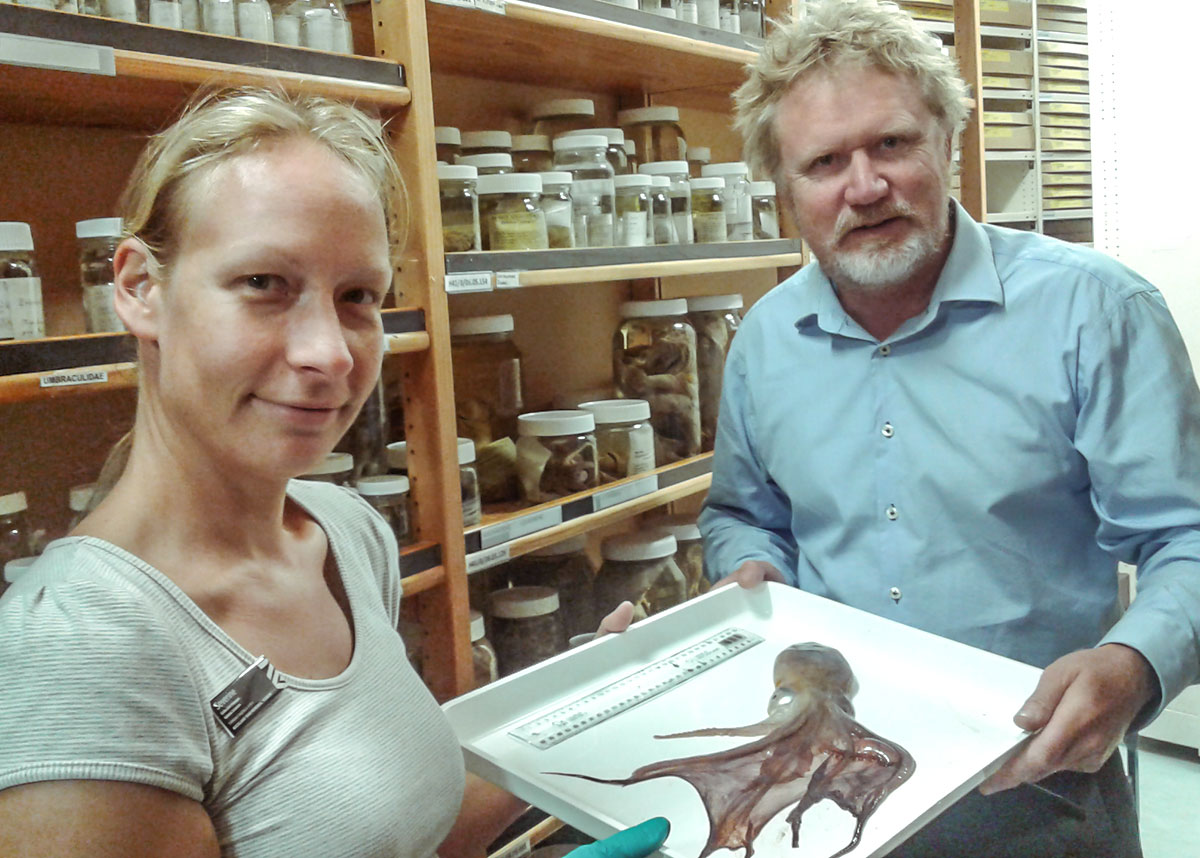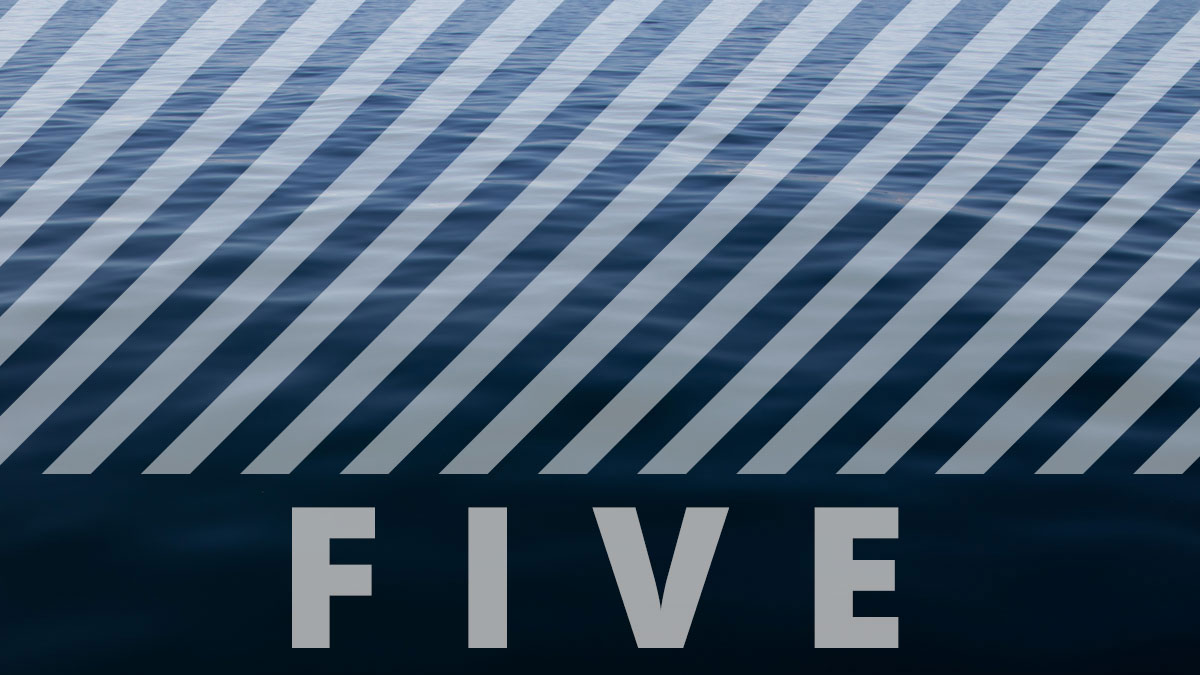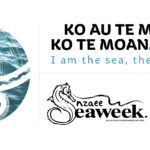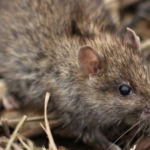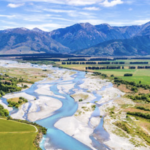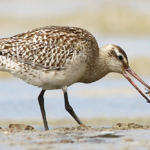I spent a lot of time snorkelling around Great Barrier Island this summer. I was also working on the latest Hauraki Gulf Marine Park poster series. Illustrated by wildlife artist Dave Gunson, they show some of the remarkable range of marine life and seabirds found in the Gulf.
Returning from a recent spearfishing trip I thought I would add what I assumed was a broad squid suspended in the water column to my catch bag, a tricky shot given its small size.
It was soon apparent my prey was not what I had expected. As well as discharging black ink it released gossamer thin streamers with stripes and eye shapes. The squid seemed to be multiplying and growing in size.
On shore the animal lacked the wings seen on squid, its hood divided into cream and purple colours and webbing between some of its tentacles.
Back at my island bach, rather than adding my squid to the frypan I popped it in a ziplock bag and on return to the city took it in to Auckland Museum.
Collection manager Severine Hannam, quickly recognised it as an octopus rather than a squid (octopuses have eight arms while squids have eight arms plus two specialized tentacles that they use to capture prey).
With some on-line help from cephalopod expert Dr Steve O’Shea it was identified as a female blanket octopus or Tremoctopus violaceus.
According to the Guide to the Squids, Cuttlefishes and Octopuses of Australasia “this unique animal lives in the open oceans of the world and little is known of its behaviour. The transparent webs of the front arms are segmented and can be shed like sheets of paper.”
The species is also the “world’s most sexually size-dimorphic large animal.” This means that males are tiny – 2.4 cm long and weigh 0.25 g – compared to females which grow up to two metres long. The weight ratio between sexes can be up to 40,000:1.
My blanket octopus will be the first record of this species in the museum’s extensive marine collection, and was consigned to be frozen, pickled and placed in a display jar.
Museum Head of Natural Sciences of Tom Trnski says it adds to our knowledge and appreciation of the remarkable diversity of species found in the Gulf.
Just a fortnight earlier in almost the same spot I had come across a marine turtle which Tom suggested would have been a green turtle.
This year’s poster series identifies nearly 100 species found in the shallow, mid and deep water environments of the marine park.
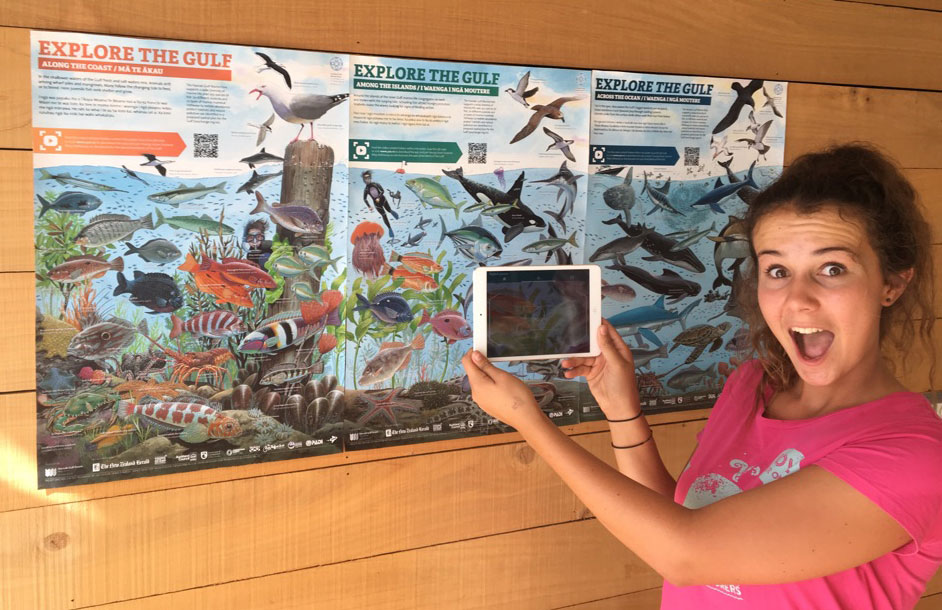
They also feature ‘Young Ocean Explorer’ Riley Hathaway and downloading an App will unlock video content about many species on phones and devices.
The poster will appear in the New Zealand Herald on Feb 27 and 28 and March 1 as part of Seaweek and be made available to schools through Auckland Council’s education programmes. Copies can be ordered from gulfposters@aucklandcouncil.govt.nz


